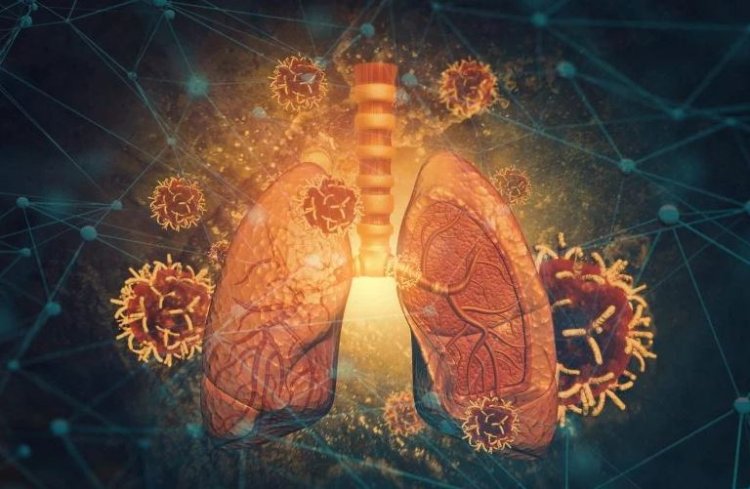Researchers discover genetic malfunction that causes rare lung disease

New York, US: The macrophage is one of the most important cells in the body. This immune cell, which means "big eater" in Greek, consumes and digests harmful materials such as bacteria, cancer cells, dust, and detritus. Macrophages are notably crucial in the lungs, where they fight bacterial infections while also clearing the lungs of excess surfactant, a protein- and lipid-rich coating that is necessary for proper function but can cause a sticky buildup if not regulated.
In a recent investigation, researchers from Rockefeller University and other institutions uncovered a previously unknown genetic disease that causes faulty cell function.
The researchers made their discovery by drawing an unexpected connection between a select group of sick children. Throughout their lives, these nine children had battled severe diseases such as pulmonary alveolar proteinosis (PAP), progressive polycystic lung disease, and recurrent bacterial and viral infections that left them gasping for breath from often cyst-plagued lungs.
But as genomic data revealed, the children shared another characteristic: the absence of a chemical receptor that is supposed to call alveolar macrophages into action. It's the first time that this missing receptor, called CCR2, has been linked to disease. The researchers, including Rockefeller's Jean-Laurent Casanova and Institut Imagine's Anna-Lena Neehus, recently published their results in Cell.
The study also found that the children are missing half of their alveolar macrophages, which are located in the air sacs of the lungs.
"It was surprising to find that CCR2 is so essential for alveolar macrophages to properly function," said Casanova. "When it comes to lung defense and cleanup, people without it are operating at a double loss."
More formally known as C-C motif chemokine receptor 2, CCR2 sits on the surface of alveolar macrophages, a kind of monocyte (or white blood cell). It responds to the presence of a chemical ligand, or binding molecule, known as CCL-2, which is also expressed by monocytes.
The receptor and ligand work together to summon macrophages to the site of an infection, and to maintain the appropriate level of surfactant; too little can lead to collapsed lung tissue, and too much can result in narrowed airways.
It was among these immune cells that first author Neehus, of Casanova's lab at the Institut Imagine in Paris, was seeking evidence of genetic deficiencies that might alter their behavior. While combing through the genomic data on 15,000 patients in a database, she found two Algerian sisters, then aged 13 and 10, who'd been diagnosed with severe PAP, a syndrome in which surfactant builds up and the gas exchange that takes place in alveoli is hindered.
About 90 per cent of PAP cases are caused by antibodies that cripple a protein that stimulates the growth of infection-fighting white blood cells. The girls, however, didn't have the PAP autoantibodies. Instead, they had no CCR2--a newly identified genetic mutation. Perhaps its lack was connected to their pulmonary conditions, Neehus thought.
"It looked interesting and promising," she recalled.
She soon found seven other children in the cohort who had the same CCR2 mutation and serious lung conditions: two more pairs of siblings, and one trio of siblings. They were from the United States and Iran.
To explore the impact the variant might have on the children, the researchers analyzed the children's clinical histories, lung tissue samples, and genetic data.
Several key findings emerged. "First we discovered that these patients have only half the normal counts of pulmonary alveolar macrophages, which explains the different types of lesions they have across the pulmonary tissues," says Casanova. With only half a crew, the reduced cleanup unit couldn't keep up with its workload, leading to tissue injury.
The macrophages were otherwise normal, as were the children's other immune cells.
Without CCR2 signaling, monocytes have no idea where they're needed. In the study, a live-imaging analysis of the monocytes from the lungs of a 10-year-old girl with CCR2 deficiency showed the cells milling about aimlessly, unsure where to go. (See gif at top.) In contrast, live imaging of monocytes from a healthy control patient shows them migrating in the same direction, summoned by the teamwork of CCR2 and CCL-2.
This directionlessness also makes those with a CCR2 deficiency more susceptible to mycobacterial infections, because the macrophages can't find their way to the tissue clusters where mycobacteria take up residence, and thus digest the invaders.
This had dire effects for three of the children in the study, who developed bacterial infections after being vaccinated with a live-attenuated substrain of Mycobacterium bovis, an agent of tuberculosis. Their immune systems failed to assemble a legion of macrophages at the vaccination site in the shoulder, causing tissue destruction or hard nodes that had to be surgically removed, or lymph node infections. (All of the children were effectively treated with antibiotics.)
The children inherited the deficiency from their parents--and yet their parents were healthy. "Each of the parents carries one disease copy of the gene, and both parents gave the affected copy to their children," said Neehus. "The parents aren't affected because they each only have one copy, whereas the kids have two."
Several children were the result of consanguineous marriages, in which the parents are related. The offspring of such pairings have a higher risk of inheriting the mutation that causes CCR2 to disappear.















































